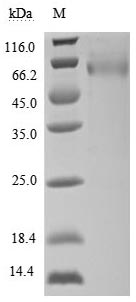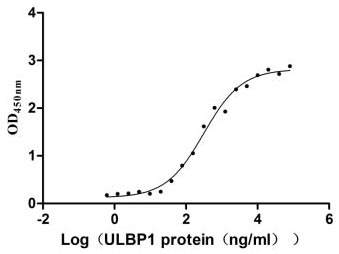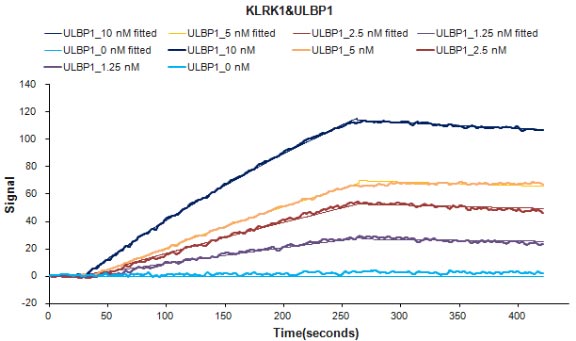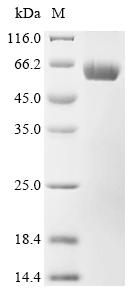Human UL16-binding protein 1(ULBP1) amino acid Gly26-Gly216, with an N-terminal linker, an internal linker, and a C-terminal FC-Myc-tag, was expressed in mammalian cells. The product is the C-terminal FC-Myc-tagged recombinant human ULBP1 protein. It is an active protein with high purity (> 90%, SDS-PAGE) and low endotoxin (< 1.0 EU/ug protein, LAL method). In the functional ELISA, this ULBP1 protein can bind to the immobilized KLRK1 protein with an EC50 constant of 228.5-427.6 ng/ml. In the LSPR assay, this ULBP1 protein can bind to the human KLRK1 protein captured on the COOH chip with an affinity constant of 2.27 nM. And it is available now.
ULBP1 is a ligand for the immune system-activating receptor NKG2D. ULBP1 binds to and activates the NKG2D receptor, mediating NK cell cytotoxicity.










